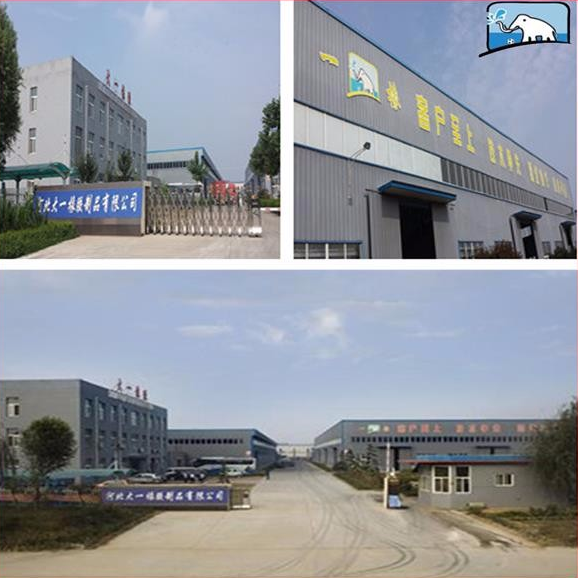335345435
Oct . 15, 2024 11:29 Back to list
Hydraulic Hose Design Criteria and Performance Standards for Industrial Applications
Understanding Hydraulic Hose Specifications
Hydraulic hoses are critical components in many industrial applications, acting as conduits for transporting hydraulic fluid that powers machinery and equipment. To ensure optimal performance and safety, it is essential to understand the specifications related to hydraulic hoses. This article will explore the key aspects of hydraulic hose specifications, including material construction, pressure ratings, temperature ranges, and standards.
Material Construction
The construction of hydraulic hoses typically involves multiple layers, each serving a specific function. The inner tube, made of synthetic rubber or thermoplastic, is designed to transport hydraulic fluids securely. The choice of material is crucial, as it affects compatibility with various fluids, resistance to wear and tear, and overall longevity.
Surrounding the inner tube is one or more reinforcement layers, often made of steel wire or textile. This reinforcement provides the hose with the necessary strength to withstand high pressures and resist bursts. Steel wire braided hoses offer higher strength and flexibility, while spiral-wound hoses are more suited for applications requiring extreme flexibility and resistance to crushing.
Finally, the outer cover of the hydraulic hose serves as a protective layer against environmental factors, such as UV rays, chemicals, and abrasion. The outer cover is typically made of rubber, polyurethane, or PVC, each offering different degrees of protection based on the operational environment.
Pressure Ratings
One of the most important specifications for hydraulic hoses is their pressure rating, expressed in pounds per square inch (PSI) or bar. The pressure rating indicates the maximum amount of pressure the hose can safely handle. It is crucial to select a hose with a pressure rating that exceeds the maximum pressure expected in the application. Exceeding the pressure limit can lead to catastrophic failures, causing leaks, equipment damage, or even personal injury.
Pressure ratings can vary based on factors such as the hose diameter, material construction, and temperature
. It's important to consult the manufacturer’s specifications to understand the pressure ratings for specific applications and conditions.hydraulic hose specifications

Temperature Ranges
Hydraulic hoses also have temperature limits, which define the range of fluid temperatures the hose can handle. Most hydraulic hoses are rated for operational temperatures between -40°C (-40°F) and 100°C (212°F). However, certain high-performance hoses can withstand temperatures up to 150°C (302°F) or higher.
Selecting the right hose for the temperature range of the hydraulic fluid is critical. Excessive heat can degrade the hose material, leading to premature failure. Conversely, too low of a temperature can cause the hose to become brittle and crack. Manufacturers provide detailed temperature ratings, so it’s essential to choose a hose that complies with the specific thermal requirements of your application.
Standards and Certifications
Various industry standards and certifications govern hydraulic hose specifications to ensure safety and reliability. Organizations such as the Society of Automotive Engineers (SAE) and the International Organization for Standardization (ISO) have established widely adopted standards for hydraulic hoses. For instance, SAE J517 is one of the most recognized standards that define the requirements for rubber hydraulic hoses.
Additionally, hoses may carry certifications such as the American National Standards Institute (ANSI) or Canadian Standards Association (CSA) marks, indicating compliance with national safety standards.
Conclusion
Understanding hydraulic hose specifications is fundamental for selecting the right hose for your application, ensuring safe and efficient operation. Key factors such as material construction, pressure ratings, temperature ranges, and adherence to industry standards should all be carefully considered. Making informed choices based on these specifications will help prevent costly downtimes, enhance the lifespan of equipment, and maintain a safe working environment. Whether you are an engineer, a maintenance technician, or a purchasing agent, having a solid grasp of hydraulic hose specifications is crucial for the successful operation of hydraulic systems in various industries.
-
SAE 100 R17 Black Smooth Cover Hydraulic Hose
NewsMar.07,2025
-
SAE 100 R17 Black Smooth Cover Hydraulic Hose
NewsMar.07,2025
-
SAE 100 R17 Black Smooth Cover Hydraulic Hose
NewsMar.07,2025
-
SAE 100 R17 Black Smooth Cover Hydraulic Hose
NewsMar.07,2025
-
SAE 100 R17 Black Smooth Cover Hydraulic Hose
NewsMar.07,2025
-
steel wire braided hydraulic hose
NewsMar.07,2025



